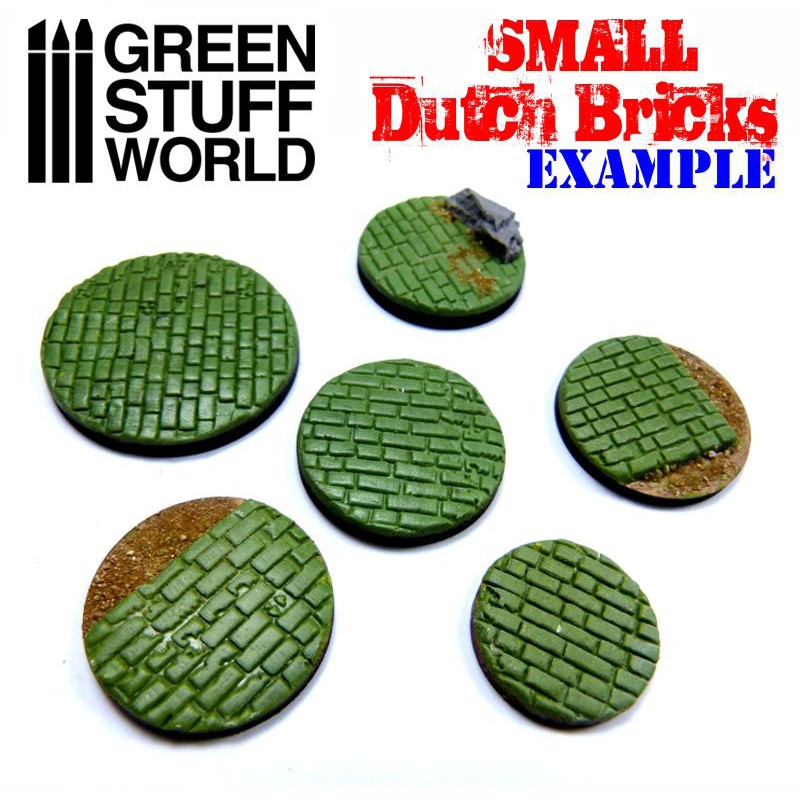Small DUTCH Bricks - Rolling Pin - 1660 Green Stuff World
Small DUTCH Bricks - Rolling Pin - 1660 Green Stuff World
Small DUTCH Bricks - Rolling Pin - 1660 Green Stuff World
Textured Rolling Pins capable of pressing a continuous repeated pattern on clay and putties. Made of clear PMMA plastic with amazing non-stick properties. Non-toxic.
Length: 14'50 cm (5’5 inches)
Diameter: 2’5cm (1 inch)
Pattern Size range from 2x3 to 2x4,5mm (variable with multiple bricks types, all of them different)
Recommended Scales: 1/35 - 1/43 - 1/48 - 1/76
Below is direct from Green Stuff World and their recommendations not those of Mighty Lancer Games as they know their products the best after all.
USE INSTRUCTIONS:
1st - Properly mix the putty/clay until ready according to the manufacturer's recommendations.
2nd - Extend the putty/clay on a surface to be textured. For optimal results, make sure you have got a smooth and even surface before impressing with the Rolling Pins. *** We recommend using a plain Rolling Pin for this.
3rd - Depending on the type of putty/clay, it is advisable to wet the Rolling Pin to prevent any sticking.
4th - Slowly move the Rolling Pin applying equal pressure at all points for an even texture.
5th - Trim any excess putty/clay with a sharp knife. It is recommended to do this once it has dried to avoid any deformations in the putty/clay.
MATERIALS:
There are plenty of different putties and clays on the market and all of them can be textured using the proper technique.
Usually polymer clay (Fimo or Sculpey type) are quite simple to work with these Rolling Pins as they allow for an easy correction of mistakes before they are baked. If the aim is to make textured bases, we recommend using MDF bases, because you can texture the polymer clay directly onto an MDF base, and then put it all in the oven, including the base. The cooking time of these clays are around 15 minutes at 150ºC. MDF Wood may leave a slight scent similar to that of toasted bread, but don't worry it won’t burn!
In the case of epoxy putties, there are a variety of techniques which achieve similar results. Good thing is. you do not need to bake them, so they may be applied directly onto plastic bases.
For Green Stuff putty, which is particularly sticky, it is required to slightly wet either the putty or the Rolling Pin with some water before texturing. You may also reduce the stickiness by applying talcum powder, or using Sculptor Vaseline.
Other epoxy putties like the Milliput putty, for example, are also suitable, but we wouldn't recommend to wet them much since it will hinder your work. Furthermore, if the mixture is too sticky, it is better to continue kneading until the stickiness is gone.
*** For this type of epoxy putties, it is very important to clean the rolling pins properly after use.
CARE INSTRUCTIONS:
After working with the Rolling Pins, use a brush and plenty of water to clean off any residue on the Rolling Pins if required.
**Any scenery, miniatures or bases shown are for example only.**
Share
Couldn't load pickup availability









